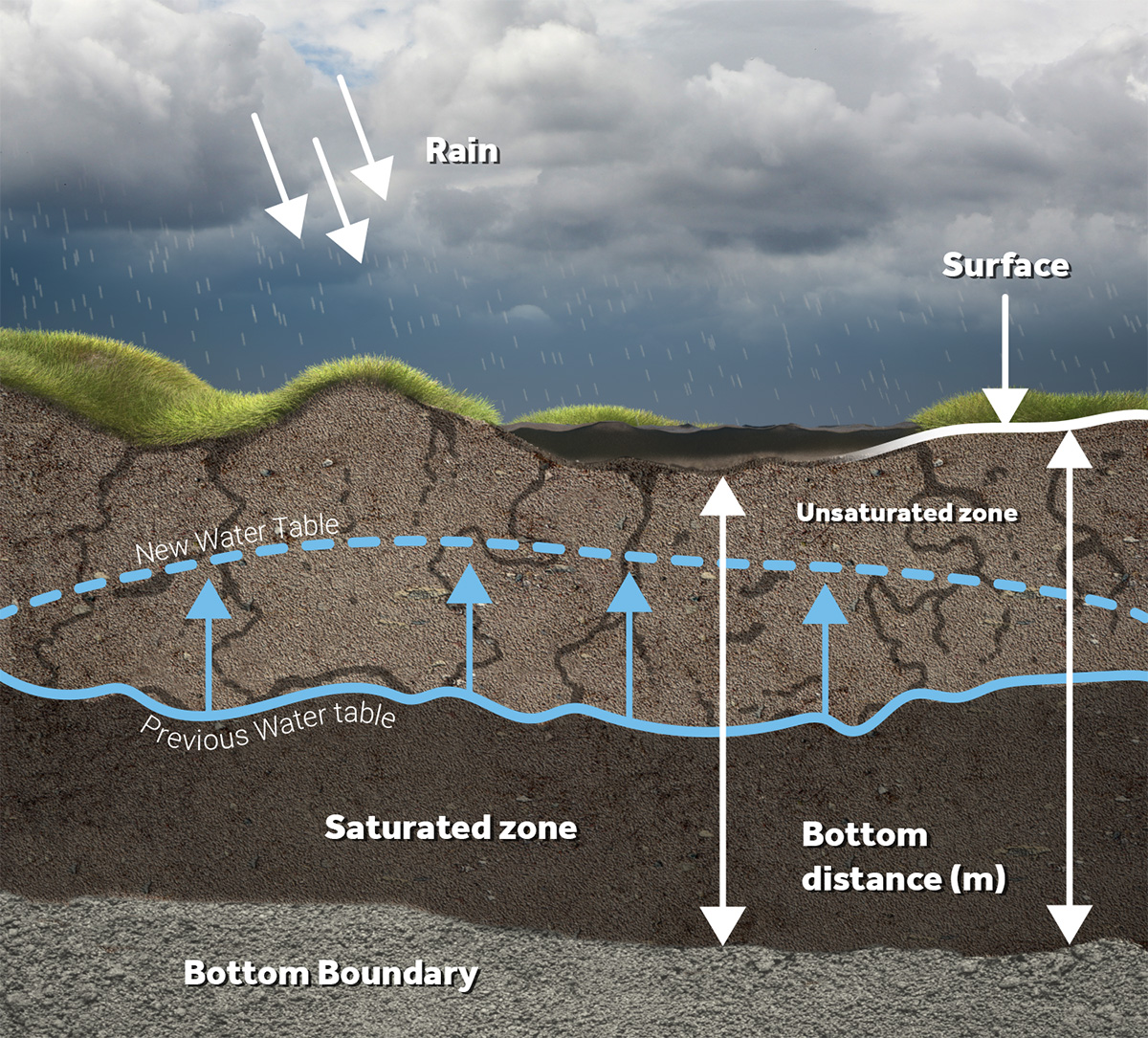Infiltration model (Water Overlay)
The Water Module supports two types of infiltration: infiltration from the surface to the unsaturated zone and infiltration from the unsaturated zone to the saturated zone. Additionally, exfiltration can also occur due to horizontal groundwater flow.
Infiltration
Surface infiltration
Surface water can infiltrate into the unsaturated ground layer. When it does, it infiltrates at a speed defined by the surface terrain's GROUND_INFILTRATION_MD attribute, the ground terrain's GROUND_INFILTRATION_MD attribute, or (if present) by the building's GROUND_INFILTRATION_MD, whichever value is lowest. Thus, the least conductive layer will be the bottleneck, even if the other layers allow better infiltration.
The infiltration speed is multiplied with the INFILTRATION_FACTOR_S. This way you can limit or increase infiltration over time to simulate e.g. limited infiltration capacity due to saturation, temperature, atmospheric pressure, etc. By default the factor is set to 1.
Water infiltrating into the unsaturated layer is assumed to be spread equally across the entire unsaturated column within the grid cell.
Surface infiltration is active when the Ground water mode is set to Complete or Infiltration Only.
Surface infiltration Only
Surface infiltration Only is active when the Ground water mode is set to Infiltration Only.
This is a lighter simulation that calculates only the infiltration speed and has a fixed maximum storage capacity in the unsaturated layer. The maximum amount of storage capacity can be set via a fixed attribute value MAX_INFILTRATION_M or using a Max infiltration prequel per grid cell.
Ground infiltration
Water can flow further down into the saturated zone at a speed defined by the ground terrain's GROUND_INFILTRATION_MD attribute. Based on the given timestep and infiltration speed, the distance the water can travel downwards is determined. This distance can be projected on this unsaturated zone as a subsection. The amount of water that flows from the unsaturated zone to the saturated zone is then equal to the amount of water in this subsection. After water has been added to the saturated zone, the groundwater level (and thus the height of the saturated zone) is redetermined. The water remaining in the unsaturated zone is redistributed uniformly across the (remaining) unsaturated zone.
Ground infiltration is only active when the Ground water mode is set to Complete.
Exfiltration
Water stored in the saturated zone can also exfiltrate out of the ground and back onto the surface, if the groundwater table exceeds the surface elevation. This situation can occur due to horizontal ground flow. Ground water flow into an adjacent cell is calculated, based on properties of the ground. Then, the groundwater table is adjusted accordingly, but may prove to exceed the height of the surface. The excess is placed on the surface of that cell instead.
Related formulas
- Groundwater level formula
- Ground flow formula (Water Overlay)
- Surface infiltration formula (Water Overlay)
- Ground infiltration formula (Water Overlay)
Related models
- Surface model
- Ground model (Water Overlay)
- Tracer flow model (Water Overlay)
- Evaporation model (Water Overlay)





